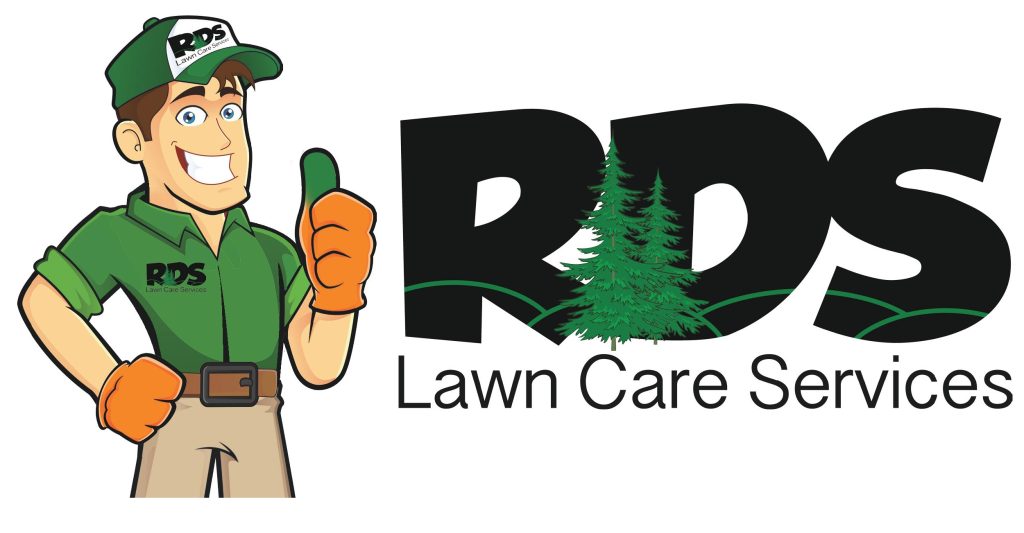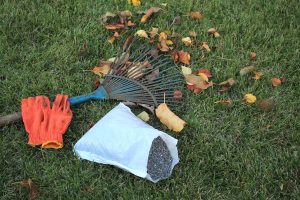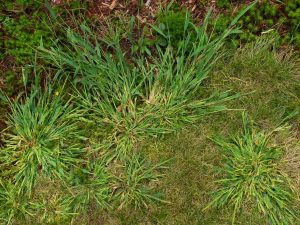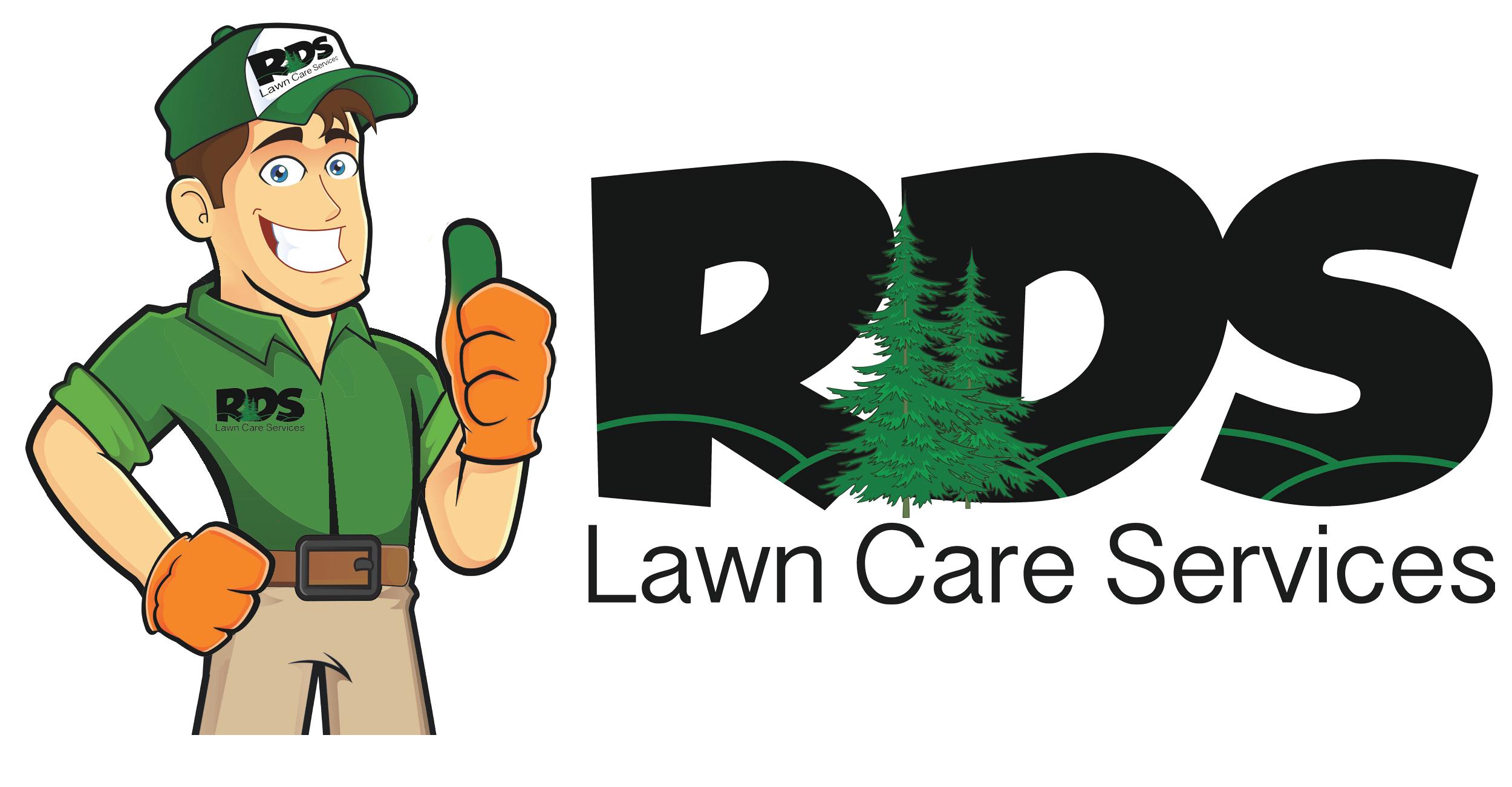Whenever we are asked how we get lawns to look so green and vibrant, it is oftentimes a difficult question to answer. The truth is, there is no quick or easy way to achieve a great-looking lawn. A perfect lawn takes a lot of hard work, dedication, and time, and it often requires the assistance of professionals. Still, we know there are many “do-it-yourselfers” out there who want to take on the challenge of creating the perfect lawn themselves, which is why we have assembled a step-by-step guide for you to do just that!
The technicians at RDS Lawn Care Services follow the fertilization and weed control instructions laid out below in order to give our customers the greenest and healthiest lawns in North Carolina. Treatment instructions are focused on either fescue (cool-season), or Bermuda and zoysia (warm-season) turf types, which are the climate-appropriate grasses we prefer to use. We highly recommend utilizing our fertilization and weed control services, among others, as tending to these issues yourself can be very time consuming and expensive.
While we do not offer mowing or irrigation services, they are both vital steps to take in order to attain that perfect lawn. Instructions for these tasks are as subjective as the needs of every different lawn, and environmental factors should always be considered. Excessive heat and/or rainfall may alter how often you need to mow and water, and results will differ from lawn to lawn. However, if the guidelines below are followed as closely as possible, there is no reason you should not have one of the best lawns in the Carolinas!
Quick Links
January 5 - February 9
Fertilization & Weed Control
Fescue Turf
- ½ lb. per 1,000 sq. ft. of slow release fertilizer will be applied to the lawn during this treatment. This lawn fertilizer will be the base for the early season feeding for up to 30-45 days. We will supplement this throughout early spring to keep the turf growing consistently. Fertilizing your lawn will help eliminate the yellowing in the turf that the cooler temperatures cause.
- We will also spray weed control to all turf areas, which will begin to control those winter weeds that are common during this time of year. It is important to remember that winter weeds are common because we can’t control weeds and grow grass seed in the fall. If we have cold temperatures during the days following this treatment, the treatment will work slowly. The next visit will take care of any weeds that are remaining as the temperatures get warmer.
Bermuda/Zoysia Turf
- Bermuda and zoysia turf are dormant during this visit, so we will not feed the turf at this time. This is an excellent time to clean out grassy and broadleaf weeds in the turf. Unlike fescue turf, we are able to apply a pre-emergent control in fall, so warm-season turf will have fewer weeds. However, nothing is 100 percent effective, so this visit is timed to catch any weeds breaking through the pre-emergent weed control products.
Watering & Mowing: Temperatures Below 70 Degrees
- We do not typically recommend using any irrigation at this time. The water that mother nature provides in our area will hold in the soil and give the roots of your turf the water they need. Overwatering during this time will only waste your water and money and encourage poor root development, which will work against you when temperatures get hot.
- Mowing is not typically needed at this time of year in the Carolina climate.
February 10 - March 22
Fertilization & Weed Control
Fescue Turf
- 1 lb. per 1,000 sq. ft. of slow release fertilizer will be applied to the lawn during this treatment. This fertilizer will be the base for the early growing season for up to 60 days. We will supplement this throughout the summer to keep the turf growing consistently.
- Pre-emergents will kill any weed seeds in the soil from the previous season. Crabgrass is the most common weed that is prevented in our soils. This control will last approximately 8-10 weeks.
- All turf will be sprayed with a herbicide to control any winter weeds that are present and to try to get you closer to a weed-free lawn.
Bermuda/Zoysia Turf
- Pre-emergents will kill any weed seeds in the soil from the previous season. Crabgrass is the most common weed that is prevented in our soils. This weed control will last approximately 8-10 weeks.
- All turf will be sprayed with a herbicide to control any winter weeds that are present.
Watering & Mowing: Temperatures Below 70 Degrees
- We do not typically recommend using any irrigation at this time. The water that mother nature provides in our area will hold in the soil and give the roots of your turf the water they need. Overwatering during this time will only waste your water and money and encourage poor root development, which will work against you when temperatures get hot.
- Mowing may be necessary during early to mid March depending on environmental factors (temperatures, rainfall, etc.). If considerable growth is evident, mow fescue turf at 3 inches and Bermuda/zoysia turf between 2-2.5 inches. Warm-season turfs (Bermuda and zoysia) should be mowed shorter in early spring.
March 23 - April 30
Fertilization & Weed Control
Fescue Turf
- ½ lb. per 1,000 sq. ft. of slow release fertilizer will be applied to the lawn during this treatment. This fertilizer will be feed for 45-60 days, and it will be low in nitrogen but will help feed the turf as we enter the stressful season.
- Soil Conditioner (RGS): We will apply a combination of two organic products–humic acid and sea kelp. These will increase plant rooting and decrease stress. They will also aid in helping the grass green up, extending our fertilizer release time, and adding oxygen to the soil profile.
- Soil Conditioner (Air 8): We will apply a liquid aeration product. This product naturally aerates the soil by creating microfractures, allowing more air, water, and nutrients to get in the soil profile.
- All weeds will be spot sprayed with a herbicide to control any weed growth that is present.
Bermuda/Zoysia Turf
- 1 lb. per 1,000 sq. ft. of a granular slow release fertilizer will be applied to the lawn during this treatment. This fertilizer will be the base for the early growing season and will feed the turf consistently for up to 60 days. We will supplement this throughout the summer to keep the turf growing consistently.
- All weeds will be spot sprayed with a herbicide to control any weed growth that is present.
Watering & Mowing: Temperatures Below 70 - 80 Degrees
- Water 2-3 times per week. A good hard rainfall can substitute for one watering during this time frame. The soil moisture will determine your schedule. Do not overwater during this period, as it will cause shallow roots that will burn during the hot summer temps.
- Rotating Irrigation Heads: 25 minutes per zone
- Fixed Irrigation Heads: 15 minutes per zone
- Hand Watering/Hose and Sprinkler System: 25-30 minutes per section
- Mow cool-season turf at 3 inches and warm-season turf at 2-2.5 inches. Consider beginning a weekly mowing schedule at this time. Consistent and regular mowing will keep your lawn healthy and encourage stronger root development.
May 1 - June 9
Fertilization & Weed Control
Fescue Turf
- applying a round of Pre-emergents will kill any weed seeds in the soil from the previous season. Crabgrass is the most common weed we see, but this pre-emergent will help prevent their seed’s germination for approximately 8-10 weeks.
- All weeds will be spot sprayed with a herbicide to control any weeds that are present.
Bermuda/Zoysia Turf
- Water 2-3 times per week. A good hard rainfall can substitute for one watering during this time frame. The soil moisture will determine your schedule. Do not overwater during this period, as it will cause shallow roots that will burn during the hot summer temps.
- Rotating Irrigation Heads: 25 minutes per zone
- Fixed Irrigation Heads: 15 minutes per zone
- Hand Watering/Hose and Sprinkler System: 25-30 minutes per section
- Mow cool-season turf at 3 inches and warm-season turf at 2-2.5 inches. Consider beginning a weekly mowing schedule at this time. Consistent and regular mowing will keep your lawn healthy and encourage stronger root development.
- ½ lb. per 1,000 sq. ft. of granular slow release fertilizer will be applied to the lawn during this treatment.
- Pre-emergents will kill any weed seeds in the soil from the previous season. Crabgrass is the most common weed that is prevented in our soils. This weed control will last approximately 8-10 weeks.
- All weeds will be spot sprayed with a herbicide to control any weeds that are present.
Watering & Mowing: Temperatures Above 85 Degrees
- Water every other day. Try not to water an established lawn daily. The roots of your turf won’t get deep enough, and the turf will stress quickly when temps get above 90 degrees.
- Rotating Irrigation Heads: 25 minutes per zone
- Fixed Irrigation Heads: 15 minutes per zone
- Hand Watering/Hose and Sprinkler System: 25-30 minutes per section
- Mow cool-season turf at 3 inches and warm-season turf at 2-2.5 inches. Begin and adhere to a weekly mowing schedule if you have not already done so.
June 10 - July 19
Fertilization & Weed Control
Fescue Turf
- We will apply iron to all turf areas. Iron will relieve stress and give nutrients to the turf during the heat and drought conditions that we typically see during this time of year.
- All weeds will be spot sprayed with a herbicide to control any weeds that are present.
Bermuda/Zoysia Turf
- ½ lb. per 1,000 sq. ft. of granular slow release fertilizer (26-0-0) will be applied to the lawn during this treatment.
- Soil Conditioner (Dethatch): We apply a combination of humic acid, molasses, and yeast blends, which will compost-in the thatch layer at the soil’s surface.
- Core aeration should be utilized around this time frame for warm-season grass types. This will improve airflow and nutritional intake for your soil.
- All weeds will be spot sprayed with a herbicide to control any weeds that are present.
Watering & Mowing: Temperatures Above 85 Degrees
- Water every other day. Try not to water an established lawn daily. The roots of your turf won’t get deep enough, and the turf will stress quickly when temps get above 90 degrees.
- Rotating Irrigation Heads: 25 minutes per zone
- Fixed Irrigation Heads: 15 minutes per zone
- Hand Watering/Hose and Sprinkler System: 25-30 minutes per section
- Mow cool-season turf at 3 inches and warm-season turf at 2-2.5 inches. In the heart of summer, no more than ⅓ of the grass length should be removed when mowing. Mow weekly to achieve a proper and healthy height.
July 20 - August 28
Fertilization & Weed Control
Fescue Turf
- We will apply 8-10-20 granular slow release fertilizer to all turf areas during this visit. This blend will help your lawn handle the stress of summer heat, and it will help with root development, added green color, and the additional phosphorus and potassium will be beneficial for the fall seeding coming up.
- Core aeration should be performed on cool-season grasses after this period, ideally, from September through October.
- All weeds will be spot sprayed with a herbicide to control any weeds that are present.
Bermuda/Zoysia Turf
- A controlled release liquid nitrogen, plus micronutrients, that are beneficial for the soil will be applied to the lawn during this treatment.
- The first fall pre-emergent will be applied to all turf areas for weed control. This will ensure that the winter weeds will be prevented as the cooler weather approaches.
- All weeds will be spot sprayed with a herbicide to control any broadleaf weeds that are present.
Watering & Mowing: Temperatures Above 85 Degrees
- Water every other day. Try not to water an established lawn daily. The roots of your turf won’t get deep enough, and the turf will stress quickly when temps get above 90 degrees.
- Rotating Irrigation Heads: 25 minutes per zone
- Fixed Irrigation Heads: 15 minutes per zone
- Hand Watering/Hose and Sprinkler System: 25-30 minutes per section
- Mow cool-season turf at 3 inches and warm-season turf at 2-2.5 inches. In the heart of summer, no more than ⅓ of the grass length should be removed when mowing. Mow weekly to achieve a proper and healthy height.
- These watering and mowing instructions should be followed, as necessary, through the end of October.
November 1 - December 15
Fertilization & Weed Control
Fescue Turf
- We will apply 24-5-11 granular fertilizer to all turf areas during this visit. This blend will help your lawn develop a deep and healthy root system, add a desirable green color, and the additional potassium will help the turf avoid damage that cold temperatures could bring.
- During this time we are not applying any herbicides to the lawn. We realize that weeds may be present, but the new seed applied in fall needs more time to germinate and develop before it can withstand herbicides.
Bermuda/Zoysia Turf
- The second fall pre-emergent will be applied to all turf areas for weed control. This will ensure that the winter weeds will be prevented as the cooler weather approaches.
- All warm season turf will be sprayed with a herbicide to control any broadleaf weeds that are present.
Watering & Mowing: Temperatures Below 70 Degrees
- We do not typically recommend using any irrigation at this time. The water that mother nature provides in our area will hold in the soil and give the roots of your turf the water it needs. Over watering during this time will only waste your water and money and encourage poor root development which will work against you when temperatures get hot.
- If you have recently had fescue seed put on your lawn in the past 10-20 days, make sure you keep the soil damp until that seed germinates.
- Mowing is not typically needed at this time of year in the Carolina climate. If temperatures are unseasonably warm, continue to mow the top ⅓ of your lawn until turf growth is no longer evident.




